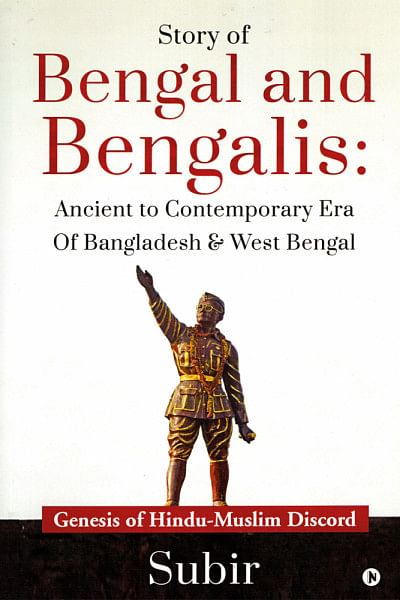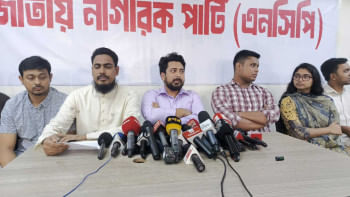Story of Bengal and Bengalis: The Bengali Homeland and its Inhabitants

With the onset of the new millennium in the 21st century, there seems to be a revival of interest in the space, in the eastern part of South Asia, historically known as Bengal, and the people who inhabit this space, the Bengalis. These Bengalis are people who derive their identity from the language they speak, and who retain this identity in spite of the political division of their homeland. More than a decade ago Ghulam Murshid's monumental One Thousand Years of Bengali Culture was published and so was Nitish Sengupta's seminal work, Bengal Divided that analyses the political vicissitudes of the people of Bengal from ancient times till it was partitioned. Other writers have now come forward to survey the landmark events that have had a significant bearing on the history of the land once called Bengal, and attempt to comprehend the subtle nuances peculiar to traditional culture of the Bengali people, as well as probe the complexity of the Bengali ethos. Among such works, Subir Deb's Story of Bengal and Bengalis is commendable.
Subir Deb, the author of Story of Bengal and the Bengalis, fashions himself simply as Subir in this aforementioned book published by the Notion Press. He was inspired to write this book after participating in discussions that take place in informal addas.
Subir begins his story of Bengal and Bengalis by discussing what he calls a bias against Bengalis. In his experience, as in that of many others, people who are classified as Bengalis, are very often at the receiving end of prejudice and discriminatory acts by people who are insensitive regarding their cultural susceptibilities. Subir's observations on the major milestones of the history of Bengal begin from the Vedic and Puranic periods, of the classic antiquity of South Asia and the advent of Buddhism and Jainism. He divides the history of Bengal into what he calls the Hindu period describing Bengal during ancient times, the Muslim period, which covers the history of medieval Bengal, and the Christian period in which he describes life in Bengal under British rule. This is followed by the secular period, describing events in Bengal after August 1947.
He describes the policies of the imperialist British rulers of India, who partitioned Bengal in 1905 without consulting its people and how the unity of Bengal was restored as a result of a protracted political movement, in 1911. Subir writes about the efforts of Deshbandhu Chittaranjan Das, to bring together the Hindus and Muslims of Bengal via affirmative action favoring Bengal's backward Muslim community. This was thwarted by the central leadership of the Indian national Congress (INC). His views on Gandhi's autocratic dominance of the INC and how his policies adversely impacted the political fate of Bengal are presented from a Bengali perspective. Subir mentions how Gandhi prevented Subhas Bose from forming a Hindu-Muslim unity government in Bengal through a coalition ministry in which the Congress and Fazlul Haque's 'Krishok Proja Party' would, under the leadership of the latter, be partners. Subhas's virtual expulsion from the mainstream of the politics of the INC by Gandhi loyalists like Patel and Prashad (and even Nehru) are discussed by Subir in detail. Subhas however remained, even after being marginalized in the INC, the idol of both the Hindus and Muslims of Bengal, which he became as a result of his role in the demolition of the Holwell Monument in Calcutta ( Kolkata). This monument, which was an arrogant symbol of British paramountcy in India, was considered by all Bengalis as an affront.
Subir describes how both Gandhi and Nehru criticized the formation of a provisional government of India and the raising of the Indian National Army (Azad Hind Fauj) by Subhas Bose. Subir quotes the British historian, Michael Edwardes, "it was not Gandhi's movement by fits and starts that led to the independence of India" and that India became free because a bankrupt Britain was pressured by its principle creditor, the United States of America, to grant India independence, in conformity with the principles of the Anglo American Atlantic Charter. In addition, according to Edwardes, Subhas Bose's raising of the Indian national Army (INA) had shaken the confidence of India's British rulers about the reliability of the Indian army, manned mostly by hitherto loyal (pseudo) martial races, to safeguard British interests during any future political confrontation with the people of India." Though Subir does not mention it in his book, a similar comment on Subhas and the Indian National Army (INA) is attributed to Clement Atlee who was the British Prime Minister in 1947.
We are informed by Subir that Nehru admitted that his acquiescence to the partition of India was because he was exhausted and was keen to be in power. Patel in fact, welcomed the partition of India which he felt would eliminate the political nuisance value of Muslim leaders like Jinnah, the Muslim League and the Muslim community in independent India. Between the lines, Subir seems to hint that had Subhas been around in India in 1947, he would have opposed the partition of the country more vigorously than those who pushed him to the periphery of the Indian national Congress. As for the future of Bengal, both Gandhi and Jinnah were in favour of a United Independent Bengal, in 1947, that was proposed by Sarat Bose (the older brother of Subhas) in conjunction with H.S. Suhrawardy and Abul Hashem. Gandhi later withdrew his support for the proposal of an independent Bengal. The final decision about the fate of Bengal after the exit of the British from the subcontinent was taken at a meeting held in Delhi a few weeks before India was granted independence. Mountbatten presided over this meeting that was attended by Gandhi, Nehru, Patel and Baldev Singh on one side and Jinnah, Liaquat Ali Khan and Abdur Rab Nistar on the other. Bengal was, irrevocably, partitioned on the basis of a decision taken at a meeting, in which no Bengali took part.
From what he calls the Christian period in Bengal, Subir moves on to the post-independence period in India which he calls the Secular Period. He writes extensively about the East Bengal refugees in India, displaced by the social destabilization and violence that occurred in the wake of the partition of the subcontinent and the advent of independence. According to Subir, the Indian Independence Act did not confer independence to India. He says India became independent after it was proclaimed to be a republic on the basis of its constitution. Subir notes the hostility that Bengalis in general and East Bengal refugees in particular encountered in Assam. He traces the origin of the anti-Bengali feelings in Assam to the time when the British ruled. The anti-Bengali sentiment in Assam was deliberately fomented by the British who introduced the infamous "Line System," a kind of apartheid to segregate Bengali settlers in Assam from its indigenous people. The difficulties encountered by the East Bengal refugees in independent India are a recurrent theme in Subir's book. His book in fact begins with a tribute to those who had to leave their homes as a result of the process through which India's freedom arrived. Bangladesh's liberation struggle and the initial years of its existence as a sovereign state are also discussed in the section of Subir's book that he calls the Secular Period.
In the chapter on "Hindu Muslim Discord" Subir attempts to analyze, the roots of Hindu-Muslim antagonism. He is firmly of the opinion that the British rulers of India exacerbated Hindu-Muslim tension through their presentation of the history of India prior to the period of British ascendance in the subcontinent. The events of the period preceding British rule in India were shown by imperialist historians like Vincent Smith and Valentine Chiron to be a chronicle of continuous conflicts between Hindus and Muslims. Subir praises the work of Sundar Lal, the Gandhinian historian and Shashi Tharoor for their revision of the version of history that was imposed on the Indians during the pre-independence period, and presenting readers an authentic alternative view of history seen from a South Asian perspective.
In the final chapter entitled, "Little Nationalism," Subir talks of a sub-nationalism among India's Bengalis which he considers to be something healthy and positive. The author of The Story of Bengal and Bengalis is a person with a keen intellect, but without intellectual pretensions. He writes in a style that is relaxed and informal, almost conversational. Readers are encouraged to go through Subir's Story of Bengal and the Bengalis attentively as it is a veritable treasure trove of information. Through this review I wish to request the author to bring to the notice of the publishers of his book, Notion Press, the need to include an index of the books contents, at the end of the book, when its next edition is printed.
My most important takeaway from the Story of Bengal and Bengalis is a message that Bengalis on both sides of the political divide have to be conscious of their common identity. The Bengali homeland may be irreversibly partitioned, but the border separating the two Bengals can someday become an invisible border like the border between the Irish Republic and Northern Ireland, in accordance with the provisions of the 'Good Friday Agreement.' Such a border would significantly expand cultural, economic and social interaction among Bengalis from both Bengals and enrich their lives.
Syed Marghub Murshed is a retired civil servant.

 For all latest news, follow The Daily Star's Google News channel.
For all latest news, follow The Daily Star's Google News channel. 



Comments